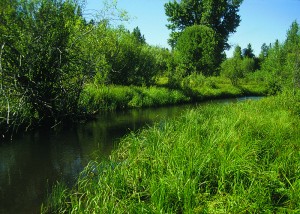When the 2014 Farm Bill passed this winter, we did our best to sift through a complicated legislative landscape and understand what it meant for conservation. Some programs disappeared and others merged, forming strange new acronyms. But now that USDA’s Natural Resources Conservation Service (NRCS) has started implementing these new programs, clear opportunities are emerging. Among them, almost $400 million in grant money for producers and partners in the Regional Conservation Partnership Program (RCPP), including more than $138 million for eight Critical Conservation Areas. The Chesapeake Bay watershed is one of those critical areas.
RCPP is designed to leverage the financial resources and technical expertise of partners – such as local governments, non-profits, water districts, farming cooperatives, universities and more — with federal dollars. Partners that receive matching federal grants are required to work with farmers and landowners to help them achieve clear conservation goals with measurable outcomes. The partners are expected to reach out to farmers and landowners, and encouraged to help individual owners sign up for federal assistance to help them achieve project goals. As part of the grant agreement, partners also must collect data demonstrating how successful their projects are. NRCS will aggregate the information it receives from all project partners to determine how well a Critical Conservation Area is addressing priority concerns overall. In the Chesapeake Bay watershed, USDA has identified water quality and fish and wildlife habitat degradation as the priority concerns; in particular, excess sediment in surface water and excess nutrients and pesticides in surface and ground water. Therefore, all proposals would have to address at least one of these priority concerns.
NRCS is accepting pre-proposals until July 14 for projects lasting up to five years. Check out their website for more information and application procedures.

There seems to be plenty of room for improvement according to the Chesapeake Bay Foundation’s most recent report. Overall, Bay states have reduced pollution and are making progress towards fulfilling the Chesapeake Clean Water Blueprint goals. Much of this improvement comes from upgrading sewage treatment plants, arguably the easiest target to address. But each state lags in achieving other goals, including improvements in some agricultural practices. Virginia for example, has made great progress in fencing cattle out of streams (we like to think Downstream’s partners had something to do with this), and is close to achieving its interim goals in nutrient management, pasture management, and cover crops. But it’s fallen short in others, including planting forest buffers and improving conservation tillage. Conversely, West Virginia has done a good job on forest buffers and animal waste management, but not enough to fence cattle out of streams. Maryland was more successful than other states in hitting most of its milestone marks, but CBF sees room for improvement, particularly in planting trees outside of buffer areas.
Between the Chesapeake Clean Water Blueprint, the RCPP, and impressive local partners scattered throughout the watershed, the region is poised for impressive progress. The biggest challenge now might be making the most of these great opportunities.

